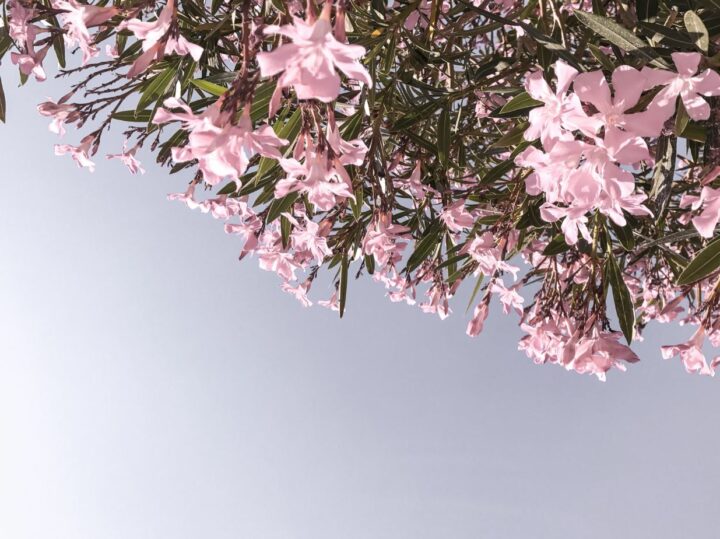
Scent, identity and reflections of our olfactory imprint
The wind picks up the scent of the water and its surroundings. The sea breeze catapults my memories back to my Native islands; the allure of nutty coconut and the faint aroma of beach gardenia. A breeze of fresh salty air passing through semi-submerged coral reefs finds its way from the shoreline. It fills me with a deep longing for home, yet satisfies me with its presence. Those scents, images, and feelings are forever imprinted in my memory and identity. I know I am not the only one; the distinct scent plays a prominent role in many cultures of the Indian Ocean. Traditions, rituals, and countries in the region, it can be said, have in part developed through a sense of smell.
Scent and memory have long been known to be intertwined – the olfactory bulb is next to the limbic system, which houses long-term memory and emotion, which is why we can catch a whiff of campfire smoke and be instantly transported back to a childhood camping trip in quite a startling and immediate way.
Being invisible, scents trigger memories deep in the subconscious and send subliminal messages. There is also an evident link between scents in a particular environment and geographic locations – even moments in time – and how people behave on both an individual and collective level. With there being such a strong expression of identity through the sense of smell, it is almost impossible to separate one from the other. For example, island nations like Madagascar may make us think of scents such as jasmine, while Sri Lanka brings back fragrances of cinnamon and spices, and the Seychelles and Mauritius remind us of bougainvillaea, frangipani and orchid fragrances.
The sense of smell is the first of the five senses to develop. We now know that, by the end of the first trimester, babies can smell what mom is eating which will be an influence on their future taste and, once born, smell is the most important of the senses which newborns use to orient themselves to their surroundings, much like any other living mammal.
Scent lacks a specific vocabulary. We don’t really have words to specifically describe scent and we fall back on metaphors linked to other senses: taste (sweet), texture (velvety), sight (bright). We lack the language to be able to confirm that our own experience of smelling a cup of coffee is the same as someone else’s experience.
Think about how you are suddenly enveloped in a smell when you walk past a bakery store: you can’t tell when it will hit and when it will pass. You are temporarily adrift in the experience.
No matter where you are, you are likely to be subtly (and not so subtly) influenced by scent. It is believed that an astonishing 75 percent of the emotions we generate on a daily basis are affected by smell, and, because of this, it is believed we are 100 times more likely to remember something we smell over something we see, hear or touch.
Though most of us instinctively understand that scent (baking cookies, a campfire, gardenias, etc.) is tied to memories and can transport us to another place and time in our lives (often referred to as the “Proust effect”), we didn’t really understand how or why until fairly recently. In 2004, Dr. Linda Buck and Dr. Richard Axel were awarded the 2004 Nobel Prize in Physiology and Medicine for their paper that demystified the sense of smell and our olfactory system, including the discovery that there are approximately 1,000 olfactory genes in our bodies (roughly 3 percent of the human genome). Each olfactory receptor cell is able to detect a minimum number of odours, and Buck and Axel estimated the average human being is able to recognize and remember about 10,000 different scents.
This focus on scent’s powerful connection to our brains and its potential to heal, soothe and delight is “making consumers hungry to learn more about how it can be leveraged for health and wellbeing,” says Matthias Tabert of International Flavors & Fragrances (IFF), a leading innovator of scent.
Of course, the concept of aromatherapy, or using scent to treat “disease,” is a centuries-old practice. However, what’s old is new again thanks to huge leaps in technology, fragrance development and neuroscience studies, including new formulations; cleaner and greener ingredients; and more science-based research encouraging medical professionals, health insurers and sceptical consumers to take another, more serious look at this age-old treatment.
“Eighty percent of what we taste is what we smell,” says Karen Stanton, Director of Global Marketing & Branding for Taste, IFF. It makes you imagine a world where scent can create no-calorie eating and drinking experiences. One real-world example of this comes from SZENT, a company that has developed water bottles featuring collars infused with natural oils that, as you smell them, turn plain, zero-calorie drinking water into something else entirely. “Flavors” include tangerine, tropical, pineapple, mint and passionfruit and are all now available on Amazon’s website.
In Singapore, an innovative bar and restaurant called the Tippling Club has patrons choose their drink by scent versus reading menus. Taking SZENT’s concept to the next level, imagine alcohol-free cocktails based purely on the smell…no hangover, no guilt – purely all wellness.
Using scent commercially clearly isn’t necessarily a new phenomenon as hotels, spas and retailers have been aware of its ability to tap into consumers’ brains for years. What is different is a growing acceptance that “olfactory logos” are a must to complete a brand’s identity.
There is an exploding industry of scent specialists vying for a brand’s marketing dollars to create signature scents as businesses big and small recognize that smell registers in our brains first, before sight, sound or touch. The goal is to either get you to buy more, stay longer, or come back. It appears to be money well spent as studies show that consumers have a much better experience and are likely to stay somewhere longer and spend more money if the experience includes scent. In fact, shoppers tend to stay fifteen minutes longer in locations that are pleasantly scented, and that translates into further spending.
The advance in scent technology will start impacting product development in interesting ways. For example, studies show that the longer women can smell their hair-care products, the more likely they are to stay loyal to them. Don’t be surprised if scent scientists develop some way to layer time-released beads of scent into personal care products so that users can get a whiff of that “just washed” smell all day long. Another hair-care innovation comes from HAI Beauty Concepts, which launched a new line of blow dryers that infuses every blow out with the sweet scent of jasmine (with more scents to be introduced to the range).
Unsurprisingly, the hospitality industry was among the first to register the impact scent can make on brand loyalty. If you’re a frequent traveller, signature scents are likely to be the reason you may feel more at home at a Westin hotel or a Marriott hotel, depending on your taste in fragrance. Boutique hotels have smartly gravitated toward scent as a differentiator, and new properties, such as Anantara Quy Nhon Villas in Vietnam and the just-opened Fendi hotel in Rome (Fondazione Alda Fendi Esperimenti), are taking the luxury of scent to another level by letting guests personalize their room’s aroma from a scent menu.
Just as intriguing is a new deeper focus on the “bottling” of the scent of a place, allowing you to take home that “holiday” feeling or the relaxation from your last spa visit in the form of a candle or skin-care product. With the scent of your recent vacation wafting through your home or office, your mind and body are transported back to a state of relaxation.
Scent’s ability to transport us to other places is used to great effect in multisensory experiences in spas that are designed to chill us out and calm us down. From experience showers to multisensory pods to float tanks, spas are deploying scent to trigger subtle changes in our bodies, such as lowering heart rate and blood pressure, improving breath, and triggering positive memories for stress relief.
As with memories of particular times and events, scents can also remind one of places, as Ashraf Osman of the Scent Culture Institute shows in his art project Scents of Exile. Inspired by an eulogy the Palestinian poet Mahmoud Darwish wrote for himself in 2006, In the Presence of Absence, Osman’s project delves into issues surrounding olfactory memory, identity, and the nostalgia associated with cities in the Arab world and beyond.
“Cities are smells: Acre is the smell of marine iodine and spices; Haifa, the smell of pine and rumpled sheets; Moscow, the smell of vodka on ice; Cairo, the smell of mango and ginger; Beirut, the smell of sun, sea, smoke, and lemon; Paris, the smell of fresh bread, cheese, and the accoutrements of charm; Damascus, the smell of jasmine and dried fruits; Tunis, the smell of honeysuckle and salt; Rabat is the smell of henna, incense, and honey… And lands of exile have a common smell, which is that of longing for elsewhere. A smell remembering another, a smell of intermittent breaths, emotional, leading you like a tourist map that’s been used too often, to the smell of the first place.”
What does exile smell like? It is, perhaps, the scent of a melancholic desire of wanting, needing, longing for a way to return; a lucid moment of remembrance and comfort. Sometimes, this scent is all one has to hold onto.

Aminath Shafana (Shafa) is
the founder+formulator of
Island Apothecary. The first
beyond sustainable, hand
crafted artisan skin care &
wellness brand born in the
Maldives, raised by nature
and spiritually rooted in
Mother Earth.
Shafa can be contacted at: shafa@island-apothecary.com







